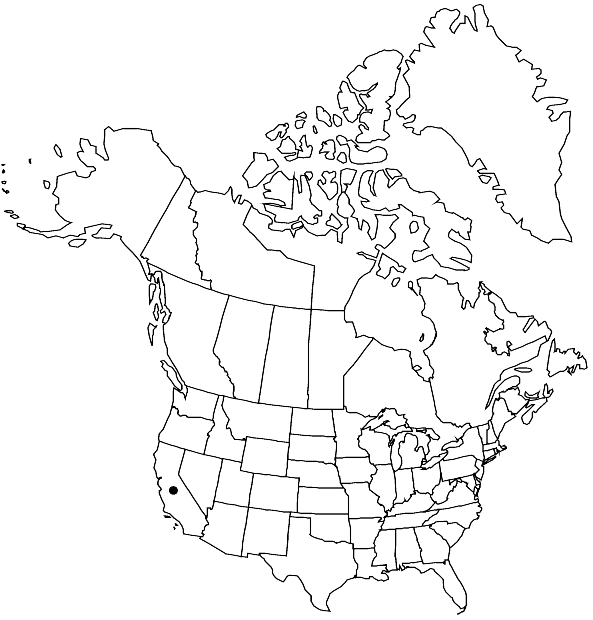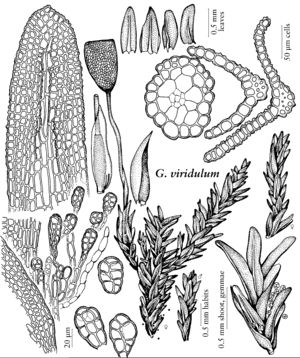Gymnostomum viridulum
Bryol. Univ. 1: 66. 1826,.
Plants dark green at least distally, usually forming a dense turf, occasionally loosely cespitose. Cauline leaves short-elliptic or ovate, occasionally long-elliptic, straight to weakly reflexed apically, 0.3–0.4 (–0.6) mm, apex rounded to occasionally broadly acute, rarely apiculate, distal margins 1-stratose, distal laminal cells 9–10 µm in width, 1: 1; distal adaxial costal cells elongate, occasionally shortrectangular. Specialized asexual reproduction usually present, of obovoid gemmae of 4–6 cells in leaf-axils. Perichaetia single on an elongate axis, terminating the axis, or lateral on a short branch; perichaetial leaves stiff or flexuose, long-ligulate to ovatelanceolate, basal-cells rectangular to rhomboid, smooth, distal laminal cells quadrate and strongly papillose or similar to the basal-cells. Capsule short-cylindric, wide-mouthed, exothecial cells bulging, usually 30–40 µm wide.
Phenology: Capsules mature spring–fall.
Habitat: Seepy, wet rock crevices
Elevation: moderate elevations (500-1500 m)
Distribution

Calif., Eurasia, Africa
Discussion
Recent collections by D. Toren and others have demonstrated that Gymnostomum viridulum is present in the New World and is locally abundant in California. In Europe, it is fairly stenomorphic, with short-elliptic to long-ovate leaves that are widest at or just before mid leaf, and, unlike the California populations, the perichaetial leaves are generally similar to the cauline leaves; some specimens have few propagula or lack them entirely. The extremely similar G. mosis (Lorentz) Juratska of the eastern Mediterranean region differs in its somewhat larger, coarser leaves with 2-stratose distal leaf margins and gemmae are absent, but, as the 1-stratose G. viridulum may lack gemmae in some collections, differences between the two species are otherwise meager and perhaps not significant. The California specimens of G. viridulum have cauline leaves somewhat longer (usually long-elliptic) than most European specimens seen. Perichaetia are present, with quite modified leaves, and usually lateral on short stalks, and one must beware of mixtures with G. calcareum, which has long-rectangular cauline leaves and bears no gemmae although these may be introduced on the microscope slide through the mixed collection. Anoectangium handelii, known for California and Nevada, differs mainly in the adaxial surface of the cauline leaves recurved when wet (rather than strict) and deeply grooved along the costa. Didymodon brachyphyllus phenocopies G. viridulum in its tight turf, ovate leaves with weak costa groove, costa subpercurrent, and the at least occasional presence of axillary gemmae, but it is KOH red and there is a small hyaline window on the adaxial costal epidermal surface near the apex in larger leaves that is characteristic of the D. vinealis complex.
Selected References
None.
